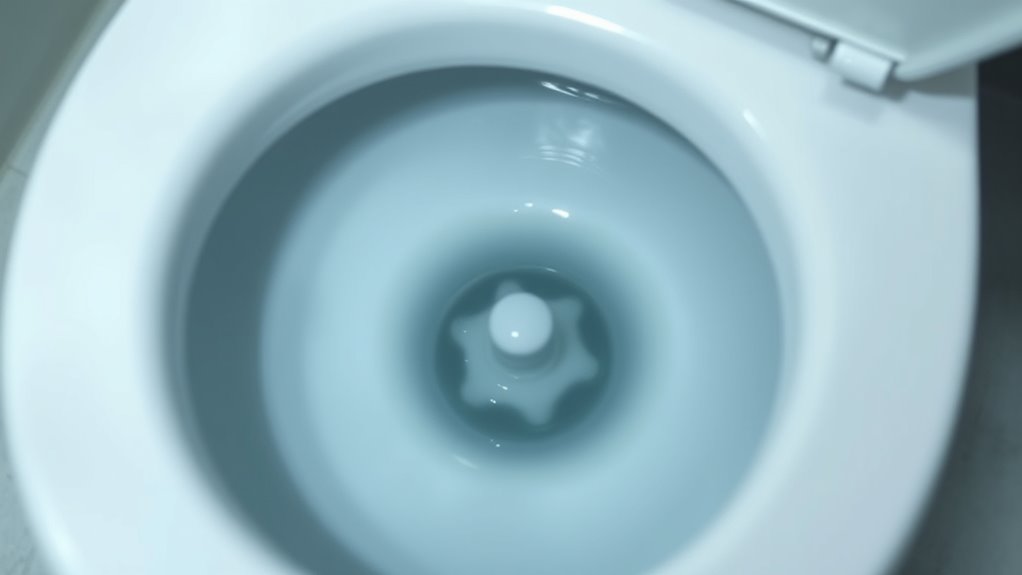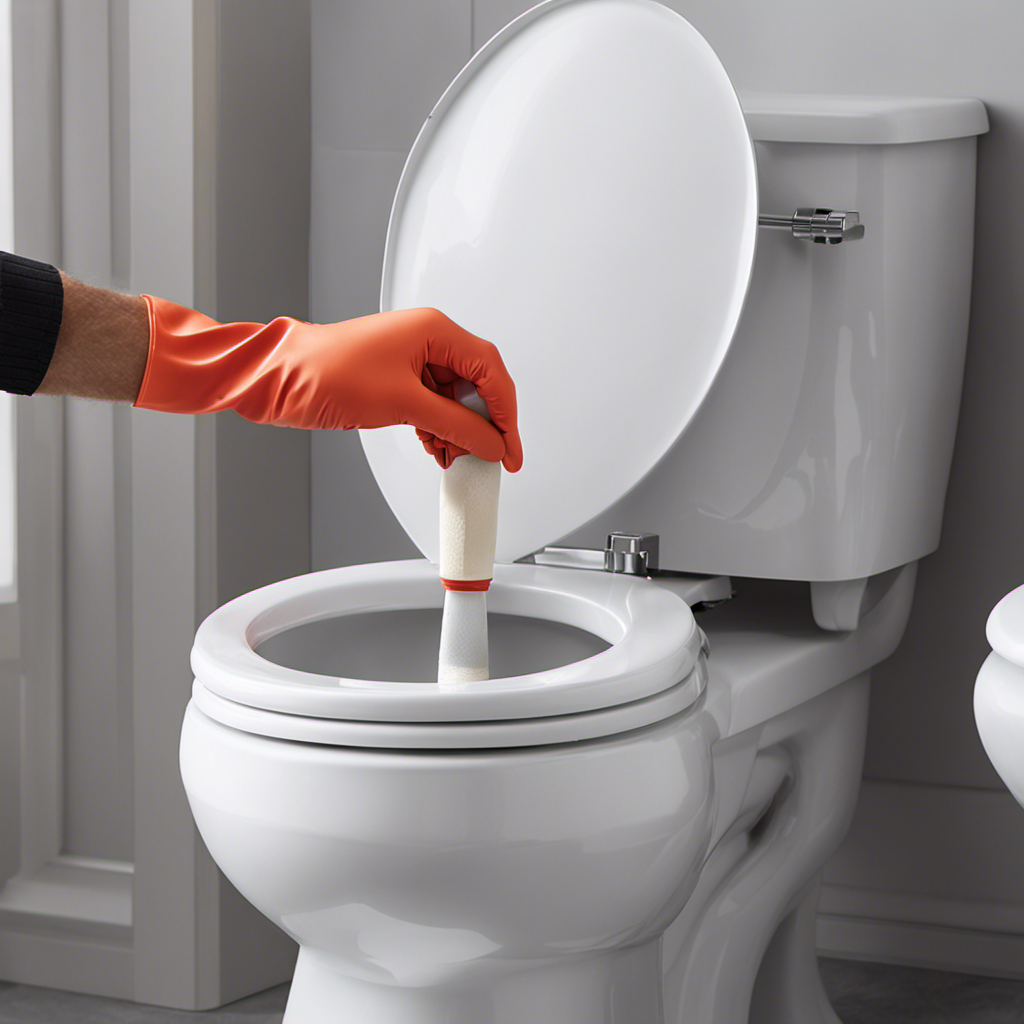Your toilet keeps running randomly usually because of a faulty flapper, water level issues, or the fill valve. A worn or warped flapper might leak, causing continuous water flow and ghost flushing. If the water level is too high, it can also trigger unwanted cycles. Checking and fixing these parts can stop the noise and save water. Stay with us to learn more about troubleshooting and solving these common problems effectively.
Key Takeaways
- Worn or misaligned flapper valves can leak water, causing continuous or intermittent running (ghost flushing).
- Incorrect water level settings or a faulty float may lead to siphoning and unintentional flushing.
- Debris or mineral buildup in the fill valve can prevent proper shut-off, resulting in constant water flow.
- A malfunctioning or misadjusted fill valve causes ongoing water supply to the tank.
- Persistent issues often require professional diagnosis to identify hidden plumbing problems and ensure proper repair.
Understanding the Basics of Toilet Flushing Mechanisms

Toilet flushing mechanisms are designed to release water from the tank into the bowl to remove waste efficiently. The toilet tank design plays a vital role in how well this process works. A properly designed tank ensures that enough water is released during each flush, maximizing flushing cycle efficiency. When you flush, the flapper lifts, allowing water to flow rapidly into the bowl, creating the siphon effect that clears waste. The tank then refills, readying itself for the next use. If the design isn’t ideal, or if parts become worn, your toilet may not flush properly or may run constantly. Understanding how the flushing cycle operates helps you recognize when something isn’t functioning as it should, especially when your toilet keeps running. Additionally, the water level in the tank must be correctly set for optimal performance, as an incorrect level can lead to ghost flushing or weak flushes. Proper toilet parts maintenance and inspection can prevent many common flushing problems. Regularly checking the fill valve and flapper can help maintain the proper flush cycle, and understanding the flapper valve function can help identify issues like leaks or improper sealing, which contribute to ghost flushing.
Common Causes of Unwanted Flushing Sounds

One common cause of unwanted flushing sounds is a faulty flapper valve that doesn’t seal properly. Water level issues in the tank can also cause the toilet to run unexpectedly. Identifying these problems can help you stop the noise and save water. Additionally, smart home automation technologies in modern toilets can sometimes malfunction, leading to ghost flushing behaviors. Recognizing relationship patterns, such as recurring issues or miscommunications, can also help troubleshoot ongoing problems with your toilet’s performance.
Faulty Flapper Valve
A faulty flapper valve is a common culprit behind unwanted flushing sounds, as it often fails to create a proper seal between the tank and bowl. When the flapper doesn’t seal correctly, water leaks into the bowl, causing the toilet to intermittently run. This leak can be subtle or loud, but either way, it disrupts your bathroom’s aesthetics and decor. A worn or warped flapper is usually the culprit, and replacing it is straightforward. Ensuring a tight seal not only stops ghost flushing but also conserves water and keeps your bathroom looking its best. Regular maintenance and quick repairs help maintain your toilet’s appearance and function, ensuring it complements your overall bathroom decor. Additionally, selecting a water-efficient toilet can help reduce unnecessary water waste caused by such leaks and improve your bathroom’s environmental impact. Properly maintaining the flapper valve is essential, as neglecting it can lead to increased water bills and potential damage to your plumbing system. Performing periodic inspections of the toilet components can help catch minor issues before they escalate into major problems. Being aware of common causes helps you troubleshoot and address issues promptly.
Water Level Issues
Water level issues often cause toilets to run unexpectedly, even when the flapper valve seems fine. If the water in the tank is too high, it can lead to tank siphoning, where water continuously flows into the bowl, triggering a flush cycle. To fix this, check the float mechanism—it might be set too high. Adjusting the float lowers the water level, preventing siphoning and stopping the ghost flushing. Some floats have a screw or clip for easy adjustment, while others require you to bend the float arm gently. Ensuring the water level stays below the overflow tube helps maintain proper function. Regularly inspecting and adjusting the float can save you from unnecessary running and reduce water waste. Additionally, a properly functioning fill valve ensures the tank refills correctly without overfilling. Proper maintenance of the fill valve can also prevent unwanted flushing sounds caused by irregular water flow. Checking the float height periodically can help maintain optimal water levels and prevent ghost flushing. In recent years, smart toilet technology has been developed to detect and automatically adjust water levels to prevent such issues.
How the Flapper Valve Contributes to Ghost Flushing

A worn or damaged flapper valve can cause your toilet to ghost flush unexpectedly. When the seal isn’t tight, water leaks into the bowl, triggering an unintentional flush. Understanding how wear and improper sealing contribute helps you fix the issue quickly.
Flapper Wear and Tear
Over time, the flapper valve can become worn or warped, which prevents it from sealing properly. This deterioration is common in toilet maintenance and directly impacts flapper longevity. When the seal isn’t tight, water leaks slowly into the bowl, causing ghost flushing. To understand the signs, consider this table:
| Issue | Cause | Solution |
|---|---|---|
| Continuous running | Worn or warped flapper | Replace flapper |
| Inconsistent flush | Flapper not sealing properly | Adjust or replace flapper |
| Frequent ghost flushing | Flapper leaks small amounts | Check for damage |
| Noisy operation | Flapper not seated correctly | Realign or replace |
| Reduced toilet efficiency | Flapper deterioration | Regular toilet maintenance |
Maintaining your flapper guarantees reliable toilet operation and prevents ghost flushing caused by wear and tear. Proper toilet maintenance can extend the life of your flapper and keep your toilet functioning smoothly. Regular inspections and timely replacements of worn components contribute to efficient flushing and reduce unexpected issues. Additionally, using quality replacement parts ensures better durability and performance.
Improper Seal Formation
When the flapper valve doesn’t form a proper seal, it allows small amounts of water to leak into the bowl continuously, leading to ghost flushing. This is often caused by sealing issues that prevent the toilet seal from closing tightly. A faulty or warped flapper can cause persistent leaks, making your toilet run intermittently. To fix this, check the flapper for damage or misalignment. You might need to replace it to guarantee a proper toilet seal.
Some common signs of sealing issues include:
- Continuous running water without flushing
- Water level fluctuating unexpectedly
- Visible damage or mineral buildup on the flapper
Addressing these problems can eliminate ghost flushing and save you water and money.
The Role of the Fill Valve in Continuous Running

The fill valve plays a essential role in controlling the water level inside your toilet tank. When functioning properly, it opens to refill the tank after a flush and closes once the correct water level is reached. If the fill valve is faulty or misadjusted, it can cause continuous running, where water keeps flowing into the tank. This constant flow can lead to ghost flushing and increased water bills. A worn or debris-clogged fill valve may fail to shut off properly, allowing water to leak into the overflow tube. Regular maintenance of the fill valve can help prevent issues like ghost flushing and conserve water. Adjusting or replacing the fill valve often resolves this issue, ensuring the toilet operates efficiently and reduces water waste. Ensuring the valve is set correctly and free of obstructions helps prevent continuous running and keeps your toilet functioning efficiently. Additionally, understanding the impact of faulty components can aid in diagnosing and fixing the problem more effectively.
Signs of a Worn or Damaged Flapper or Seal
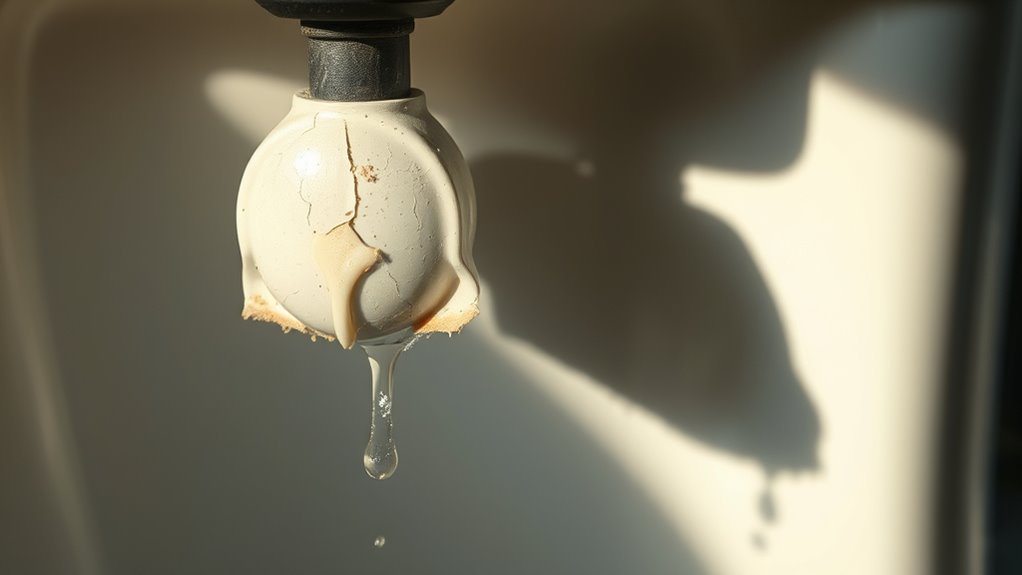
A worn or damaged flapper or seal often causes your toilet to run continuously or intermittently. You might notice signs like persistent toilet bowl staining, which indicates water leaks and mineral deposits. Check the flapper for signs of deterioration—cracks, warping, or brittleness—especially if it’s made from older flapper material types like rubber or plastic. Sometimes, the seal around the flapper isn’t tight, letting water seep into the bowl. Other signs include:
Worn flappers or seals cause continuous toilet running and persistent stains.
- Constant running sounds even after flushing
- Water level fluctuating unexpectedly
- Visible debris or mineral buildup around the flapper or seal
If these symptoms appear, replacing the flapper or seal usually stops the ghost flushing and restores proper function.
Causes of High Water Level in the Toilet Tank
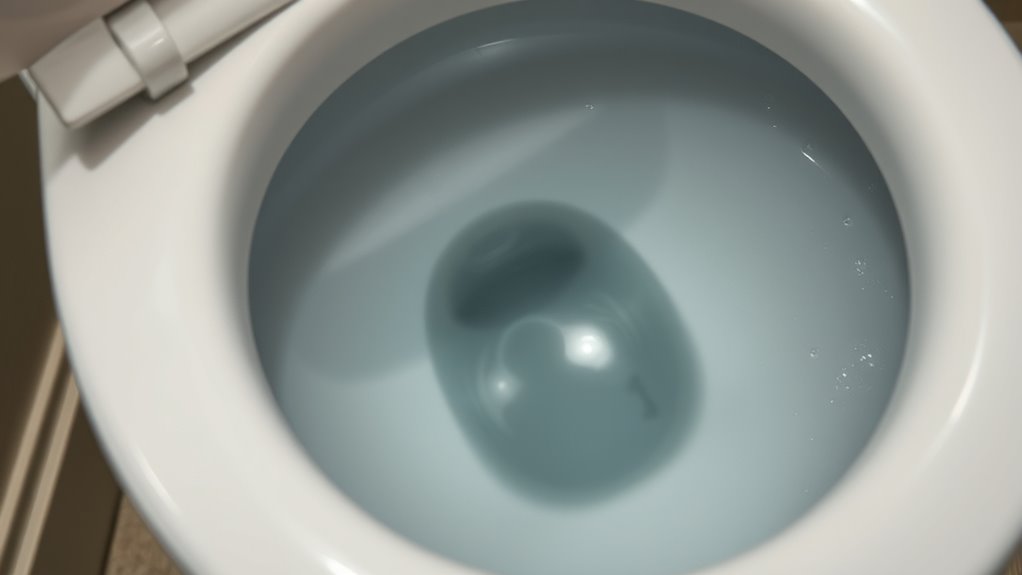
High water levels in your toilet tank often result from issues with the fill valve or float mechanism. If the float is set too high, your tank will hold more water than necessary, wasting water and undermining water conservation efforts. A faulty or misadjusted fill valve can also cause the water to rise too high before shutting off. Over time, mineral deposits and debris can impair these components, making proper plumbing maintenance essential. When the float or fill valve malfunctions, the tank’s water level stays elevated, increasing the risk of ghost flushing and water wastage. Addressing these issues promptly helps conserve water and ensures your toilet functions efficiently, preventing unnecessary strain on plumbing systems.
Troubleshooting a Running Toilet Step-by-Step
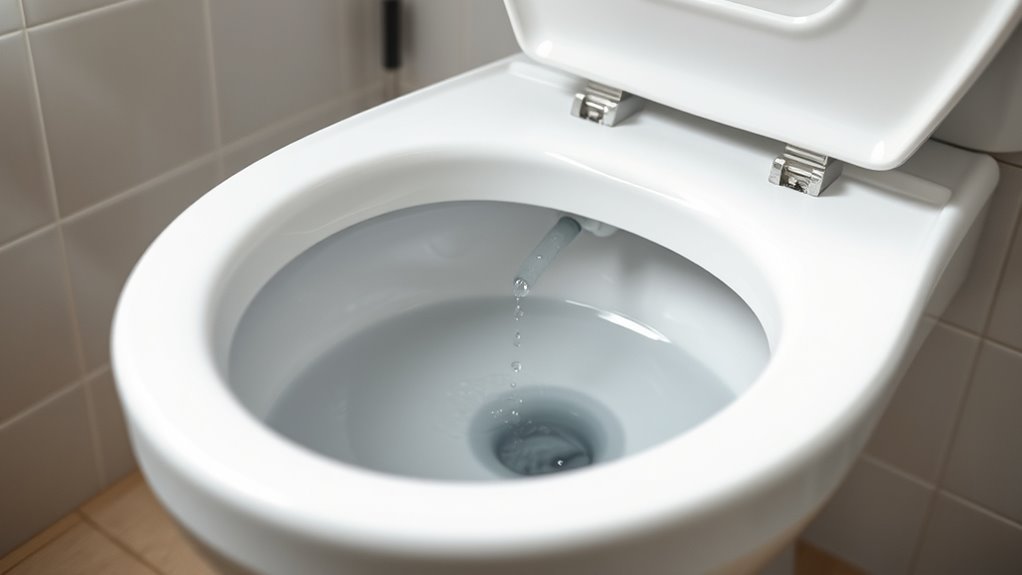
When your toilet keeps running, troubleshooting the issue step-by-step can help you identify and fix the problem quickly. Start by checking the flapper valve; a faulty or misaligned flapper can cause ghost flushing. Next, examine the fill valve for debris or wear that might prevent proper shut-off. Finally, inspect the float adjustment to ensure it’s set correctly for your toilet’s water level. Remember, a running toilet can disrupt your bathroom’s aesthetics and overall design, making it less inviting. To troubleshoot effectively:
A running toilet can disrupt your bathroom’s look; check the flapper, fill valve, and float to fix it quickly.
- Verify the flapper seals properly and isn’t warped
- Clean or replace the fill valve if needed
- Adjust the float to match the proper water level
Taking these steps helps restore your bathroom’s functionality and appearance.
When to Replace or Repair Toilet Components

You should consider replacing or repairing toilet components when you notice signs of wear, like cracks or persistent leaks. Keep in mind, repairs can be cost-effective for minor issues, but frequent fixes might add up over time. Sometimes, it’s more practical to replace the entire toilet if the parts are old or repeatedly malfunctioning.
Signs of Wear
Noticing frequent or unpredictable running sounds from your toilet can be a sign that certain components are worn out or damaged. These signs indicate it’s time to contemplate repairs or replacements to prevent waste and conserve water. Look for:
- Cracks or chips in the tank or bowl, which can cause leaks and make toilet cleaning less effective.
- Worn flapper or fill valve parts that don’t seal properly, leading to constant running and water waste.
- Mineral buildup or corrosion on internal parts, affecting performance and increasing the chance of ghost flushing.
Addressing these issues promptly helps maintain efficient water use and reduces your water bill. Keep an eye on these signs to ensure your toilet functions smoothly and conserves water effectively.
Cost of Repairs
Repairing or replacing toilet components can vary in cost, depending on the specific part and the extent of the damage. Conducting a thorough cost analysis helps you decide whether repair options are worth pursuing. Simple fixes like replacing a flapper or fill valve are usually inexpensive, often under $50. More complex repairs, such as fixing the flush valve or handling internal tank issues, may cost between $100 and $200. If multiple components are damaged or the toilet is old, replacing the entire unit might be more cost-effective. Consider the longevity of your current toilet and the expense of ongoing repairs. Balancing repair costs against replacement costs helps you make informed decisions about maintaining your toilet efficiently.
When to Replace
Deciding when to replace your toilet instead of repairing it depends on several factors, including age, frequency of repairs, and overall performance. If your toilet is old, constantly needing fixes, or has declining water efficiency, replacement might be the best choice. Consider upgrading to a modern model that offers better toilet aesthetics and improved water conservation to save money and resources long-term.
You should replace your toilet if:
- It’s over 15 years old and frequently breaks down
- Repairs cost more than half the price of a new toilet
- You want a sleek design that enhances bathroom aesthetics and reduces water usage
A new toilet can boost your bathroom’s look and help conserve water, making it a smart investment.
Preventative Tips to Avoid Future Flushing Issues
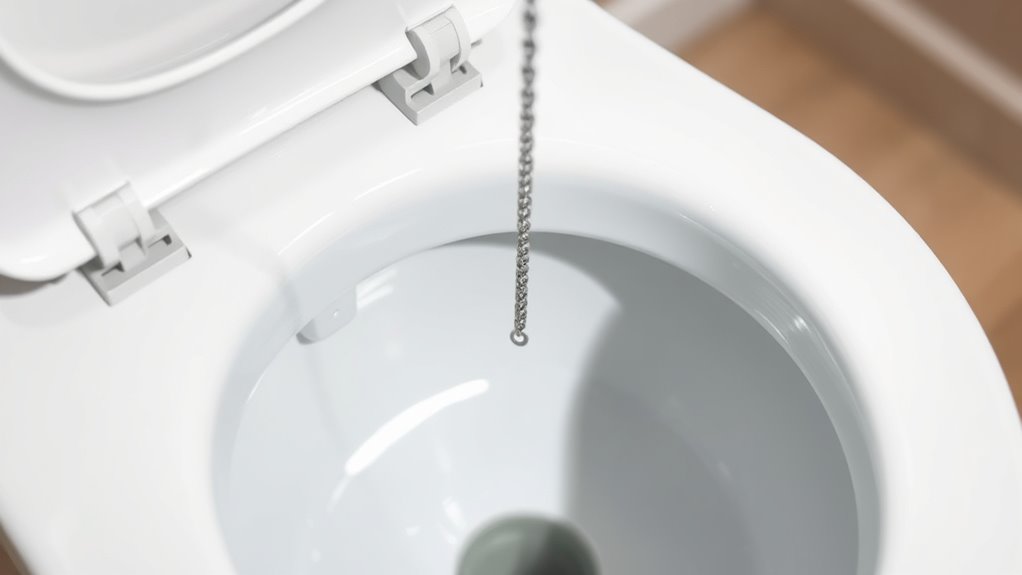
To prevent future flushing problems, regular maintenance is essential. Start by inspecting your toilet regularly for leaks or worn-out parts. Fix any issues immediately to avoid ghost flushing and conserve water. Proper toilet maintenance includes checking the flapper, fill valve, and flush mechanism to ensure they function correctly. Implement water conservation practices, such as installing low-flow toilets or adjusting the fill valve to reduce water usage without sacrificing performance. Keep the tank clean and free of mineral buildup, which can affect operation. Avoid using harsh chemicals that can damage components. By staying proactive with toilet maintenance and water-saving strategies, you minimize the risk of random flushing and extend your toilet’s lifespan, saving you both water and money in the long run.
When to Seek Professional Plumbing Assistance
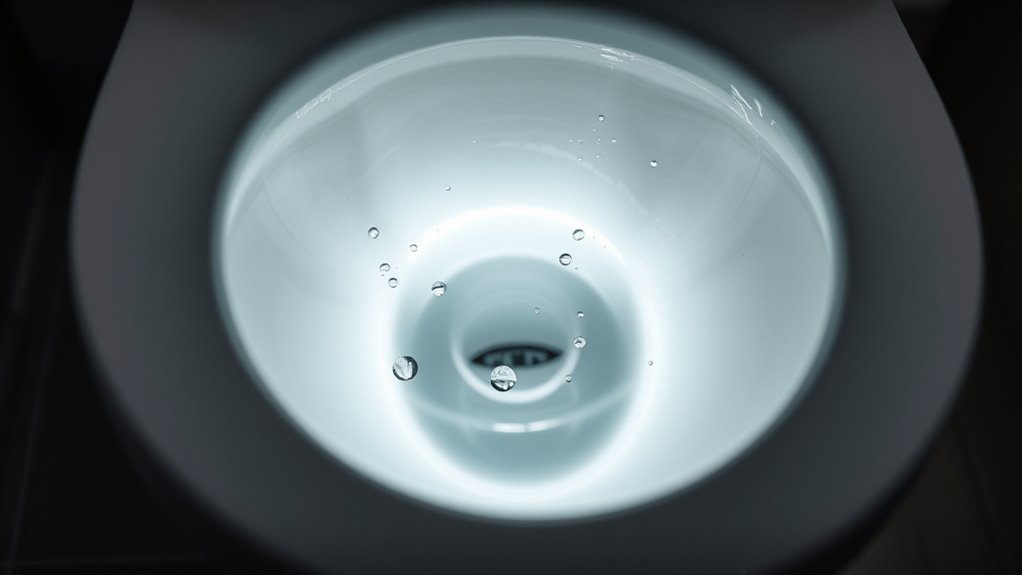
Sometimes, despite your best efforts to maintain your toilet, issues can persist or worsen over time. If ghost flushing continues despite troubleshooting, it’s time to call a professional. Neglecting problems can lead to poor toilet aesthetics and unnecessary water waste, harming water conservation efforts. You should seek help if:
- The flush mechanism is broken or leaking, causing constant running.
- Repairs don’t stop the ghost flushing, risking increased water bills.
- You notice persistent issues after attempting minor fixes, indicating a deeper problem.
A professional plumber can identify hidden issues, ensure your toilet looks good, and keeps water use efficient. Don’t ignore ongoing problems—professional help is the best way to preserve your toilet’s function and save water.
Frequently Asked Questions
Can Mineral Buildup Cause Ghost Flushing?
Mineral buildup can indeed cause ghost flushing in your toilet. When minerals accumulate in the fill valve or flush mechanisms, they can interfere with proper water flow, leading to inconsistent flushing cycles. This buildup can cause the flapper to leak or the fill valve to malfunction, resulting in your toilet running or ghost flushing even when not in use. Regular cleaning or mineral deposit removal helps prevent these issues.
Does Water Pressure Affect Toilet Flushing?
Water pressure can definitely affect your toilet’s flushing. If the water level in the tank is too low or the pipe diameter is restricted, the flush might be weak or incomplete. High water pressure, on the other hand, can cause constant running or ghost flushing if the fill valve struggles to shut off. Checking and adjusting the water level and ensuring the pipe diameter isn’t blocked can improve flushing and prevent issues.
How Long Does a Typical Toilet Flapper Last?
Timely troubleshooting tips tackle toilet flapper longevity. Typically, a toilet flapper lasts about 3 to 5 years, but its lifespan depends on water quality and usage. You should regularly perform a flapper inspection to identify signs of wear or warping. If your toilet’s lifespan feels short or it keeps running, replacing the flapper promptly can prevent persistent problems and improve overall toilet performance.
Are There Eco-Friendly Solutions for Ghost Flushing?
You’re looking for eco-friendly, water-saving solutions for ghost flushing. Consider installing a dual-flush toilet or adding a water displacement device to reduce water use. Eco-friendly flappers made from sustainable materials can also help, as they improve efficiency and prevent leaks. Regular maintenance and checking your toilet’s internal parts make sure it doesn’t waste water unnecessarily. These simple upgrades help conserve water while keeping your toilet working smoothly.
Can a Clogged Vent Pipe Cause Continuous Running?
Think of your vent pipe as the lungs of your plumbing system—when it’s clogged, airflow issues arise. A clogged vent pipe can cause your toilet to run continuously because it disrupts the pressure balance, leading to a vent obstruction. This prevents proper flushing and refilling. To fix it, check for blockages like leaves or debris, and clear the vent pipe to restore smooth airflow and stop the ghostly running.
Conclusion
A running toilet can feel like a mischievous ghost, haunting your bathroom with endless noise. But now that you understand its tricks—whether it’s a worn flapper or a faulty fill valve—you hold the power to silence the specter. With a little troubleshooting and care, you can restore peace to your bathroom’s quiet sanctuary. Don’t let this plumbing phantom steal your calm—tackle it head-on and enjoy the serenity of a well-behaved toilet.
